Move over Arches, Utah has another natural beauty to show off: Canyonlands National Park

Utah’s Mighty 5 national parks are famous among park lovers. Images of Arches, Bryce and Zion are all over social media, but you don’t hear as much about Capitol Reef and Canyonlands. Canyonlands National Park is actually the least visited of the Mighty 5 parks, though it’s also the largest at 337,598 acres.
“For many years, people who were coming to Canyonlands were aiming to come to Canyonlands because maybe they were looking for a place a little less crowded, a little less developed,” Karen Garthwait, a park ranger at Canyonlands with 17 years of service across parks, told USA TODAY. "They wanted a spot where you can sit on the rock and hear nothing but your own heartbeat."
While visitation has increased over the years, there are still plenty of wide open spaces. Here’s what travelers should know about Canyonlands, the latest national park in USA TODAY’s yearlong series:
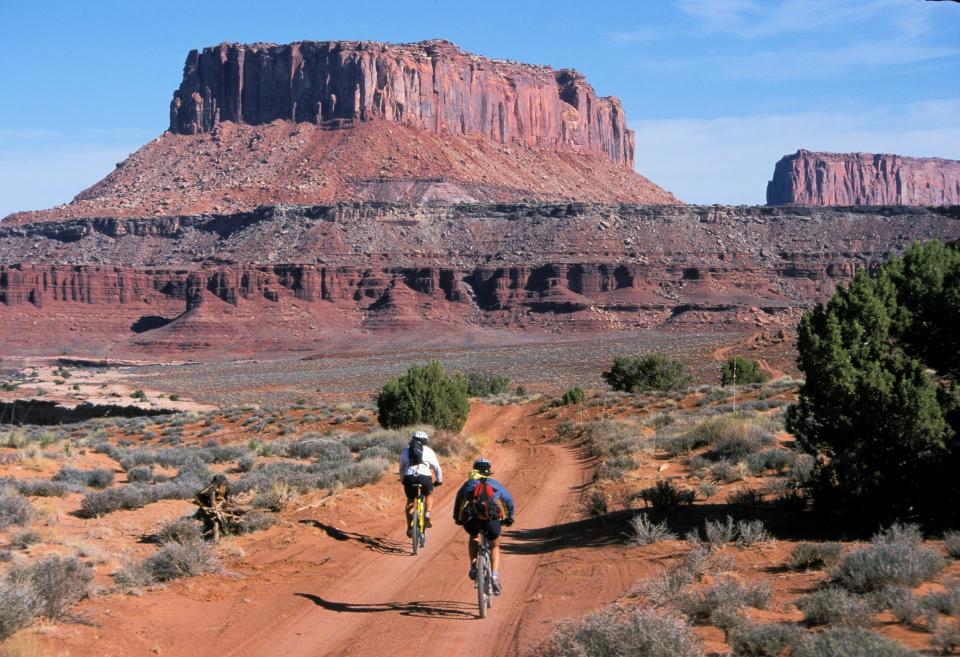
What is so special about Canyonlands National Park?
“Visitors can find whatever level of adventure they are seeking,” Garthwait said.
“On one end of the spectrum, we've got folks who are really just driving here and they're wanting to see the amazing geology and scenery and maybe learn about the cultural history of the place, and they're just visiting for a day,” she said. “On the other end of the spectrum, Canyonlands offers unparalleled backcountry adventure experiences. We're talking backpacking, four-wheel drive multiday trips, where you don't see another person for a whole day, … some of the most wild Class IV and V whitewater in the region.”
Canyonlands has four different districts.
“The northern district, called Island in the Sky, is like a triangle shape between (the Green and Colorado) rivers,” she explained. “The southern district that's below the Colorado River, kind of on the east side, that's called the Needles district. Then on the west side, we've got the Maze district. And then the fourth district is the rivers themselves because that's a completely different universe down at the bottom of the canyon.”
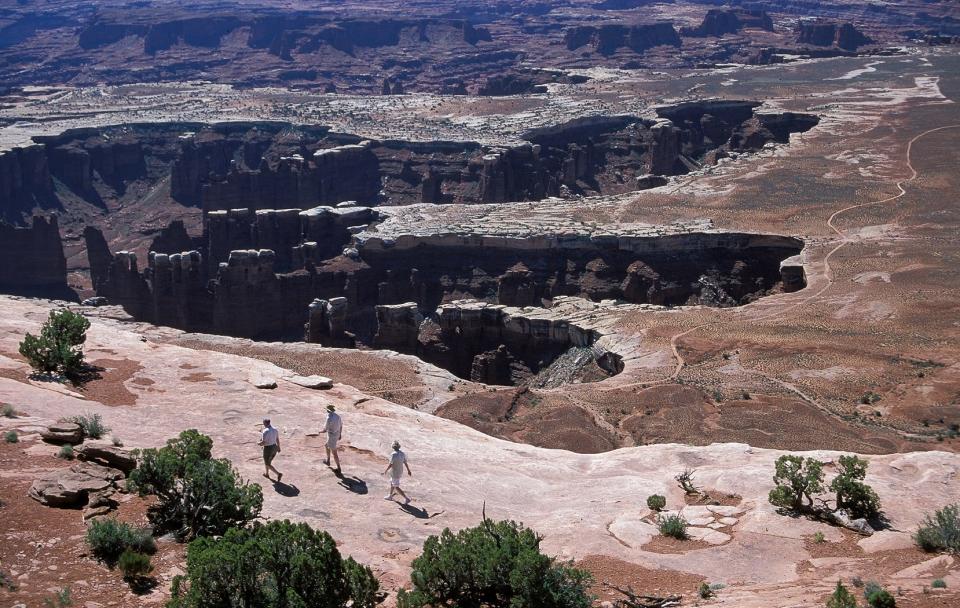
Where in Utah is Canyonlands?
Canyonlands is located in southeastern Utah, a roughly 30-minute drive from Arches National Park.
The closest town is Moab, and the nearest airport, with limited flights, is Canyonlands Regional Airport. Grand Junction Regional Airport and Salt Lake City International Airport are alternatives for out-of-state travelers, but both are several hours away by car.
These National Parks prefer plastic: What to know as more national parks go cashless
How much time do you need at Canyonlands National Park?
Travelers can easily spend anywhere from a day to a week in the park.
“There's no point in going out to the Maze itself unless you're there probably for a multiday, backcountry either vehicle or backpacking trip,” Garthwait said.
Island in the Sky is most easily accessible for travelers on tight timelines.
“It's a paved road the whole way, just about 45 minutes from the town of Moab,” she said. “That's also going to be your highest elevation section of the park. So from that part of Canyonlands, your eyes are stretching 30, 40, 50 miles to the horizon. You're looking down across the tops of that wilderness landscape.”
Several Island in the Sky trails take as little as 30 minutes.
“The Needles is the next in line,” Garthwait said, adding the district is about an hour and a half’s drive from Moab. The area offers a mix of shorter and longer hikes, including Cave Spring Trail, where visitors can see historic artifacts left behind by cowboys.
“This entire landscape was where those guys were working, and so when you're out hiking a trail, if you see an old tin can, that could be a historic artifact. Don’t necessarily assume it's trash and dig it up,” she said.
The Maze is most remote with numerous trails that require spending the night in the park.
“There's no pavement anywhere near out there,” she said. “ You need a couple (of) days and a really good Jeep … It's extremely rugged, and there are zero services. You need to be fully self-supported.”
Visitors who stay the night are in for a treat.
“On a clear night, it’s like you can reach up and run your fingers through the Milky Way,” Garthwait said, noting that Canyonlands has gold tier status as an International Dark Sky park.
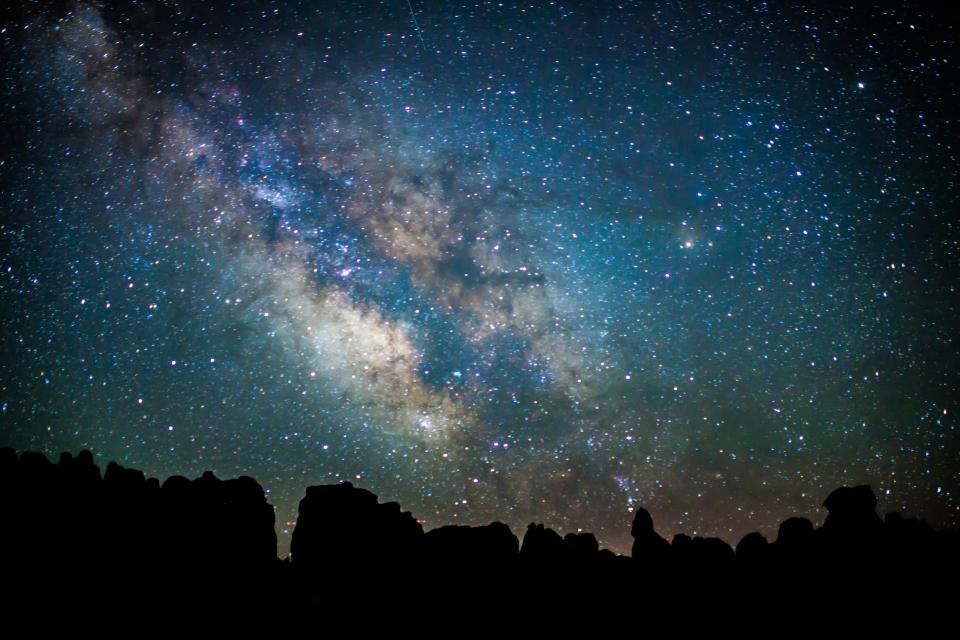
When is the best time to visit Canyonlands?
??”Spring and fall, of course, would be the most comfortable time, especially if you're looking into hiking or backpacking,” Garthwait said, adding that winter is also beautiful.
“The peak of summer though, definitely has challenges,” she said. “That's when you pack that extra gallon of water and a nice big hat and make yourself get up early so that you can be done with your hike by the peak heat of the day.”
In general, she recommended visitors bring plenty of water and think twice before pushing their limits, especially in remote areas.
“Much of Canyonlands National Park is between 4,000 and 6,000 feet elevation and what's considered a high desert landscape. It is dry. It can be extremely hot, and just the elevation itself is something a lot of visitors aren’t prepared for,” she said.
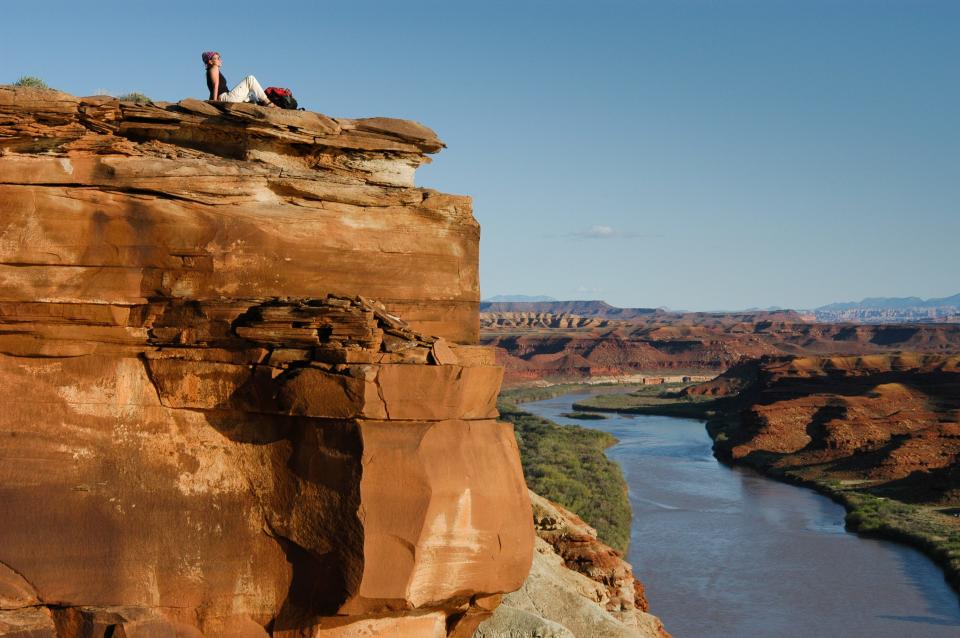
Can you drive a car through Canyonlands National Park?
There are no bridges across the rivers or shortcuts between districts, and traveling between them can take hours, so most guests only stick to one or two per trip, according to the park.
“It is absolutely worth doing a little bit of homework to figure out which of those experiences you're seeking because it's not a quick drive to just hop from one (district) to the next,” Garthwait said.
Additionally, the park warns only high-clearance, low-range, four-wheel-drive vehicles are allowed on the Maze’s backcountry roads. They’re also highly recommended for Shafer Trail in Island in the Sky.
“That road drops about 1,400 feet in just a couple of miles. Unpaved, switchbacks and no guardrails,” she said. “It is a very exciting way to enter the backcountry of Canyonlands.”
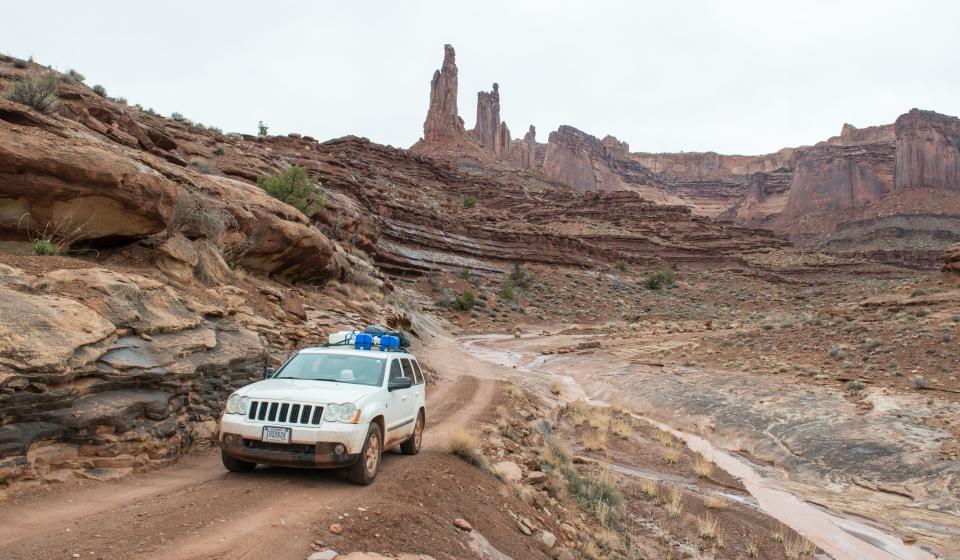
What Native peoples lived in Canyonlands?
Various peoples have lived in and moved through the area for more than 10,000 years. The park recognizes the following tribes’ historic connections to the land:
Hopi Tribe.
Kaibab Band of Paiute Indians.
Kewa Pueblo.
Navajo Nation.
Ohkay Owingeh.
Paiute Indian Tribe of Utah.
Pueblo of Acoma.
Pueblo of Isleta.
Pueblo of Jemez.
Pueblo of Laguna.
Pueblo of Nambé.
Pueblo of Picuris.
Pueblo of Pojoaque.
Pueblo of San Felipe.
Pueblo of Sandia.
Pueblo of Santa Ana.
Pueblo of Santa Clara.
Pueblo of Taos.
Pueblo of Tesuque.
Pueblo of Zia.
Pueblo of Zuni.
San Juan Southern Paiute.
Southern Ute Indian Tribe.
Ute Indian Tribe of Uintah and Ouray Reservation.
Ute Mountain Ute Tribe.
“More recently, as miners or settlers or other explorers came through the region, they were using the exact same footpaths that the ancient folks had created in many cases … to literally run cows up and down, or sheep or however they were living off the land for that generation’s industry,” Garthwait said. “When you hike those trails, you are walking in the footsteps of all of the history that came before you.”
This article originally appeared on USA TODAY: Canyonlands National Park: A guide to visiting Utah's best-kept secret